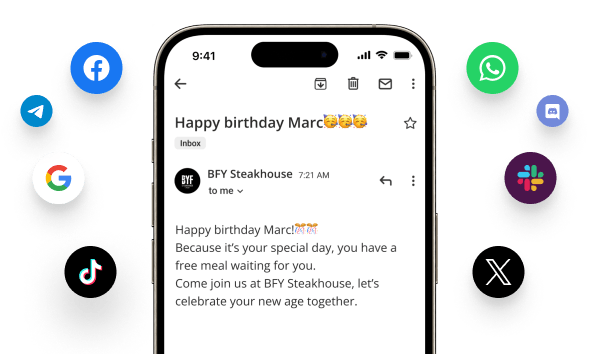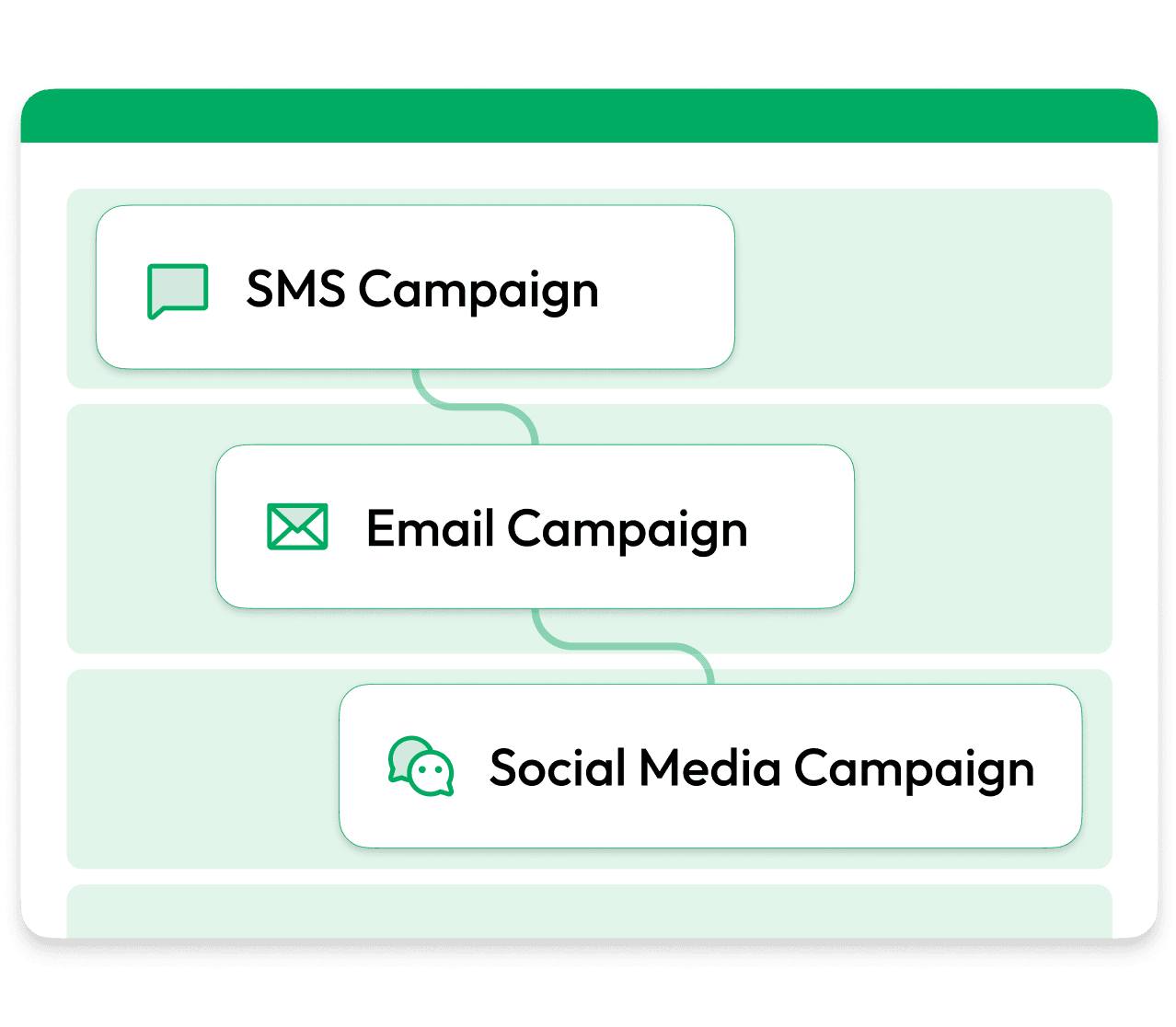Automated Marketing
Set up automated marketing campaigns that nurture customers, drive engagement, and increase conversions across all channels. Let your campaigns work for you 24/7.

Build Smart Campaigns
Automated marketing campaigns that nurture and convert customers
Automated marketing campaigns are campaigns that are set up to run automatically based on customer behavior and lifecycle stages. You set up the triggers and we take care of the rest. They are great for retention, engagement, and conversion.
Smart triggers
Set up automated email sequences based on customer behavior and lifecycle stages.
Varied channels
Deliver campaigns via email, SMS, push notifications, social media, and more.
Dynamic Personalization
Personalize automatically content, timing and offers based on data and individual customer preferences. Use variables like {first_name} to personalize your campaigns.
Why Automated Marketing Scales Results
Join businesses generating 320% more revenue with automated marketing campaigns
320%
More Revenue
Higher Revenue
Automated campaigns generate 320% more revenue than one-off marketing broadcasts.
80%
Time Saved
Time Savings
Save 80% of marketing time while increasing effectiveness and reach across all channels.
50%
Higher Conversion
Better Conversion
Automated sequences convert 50% more leads than manual campaigns across all channels.
∞
Scalability
Infinite Scalability
Handle unlimited customers with personalized experiences that scale automatically across all channels.
Smart triggers Campaigns
Set up automated email sequences based on customer behavior and lifecycle stages.

Birthday
Connect with customers on their birthday.
Store visit
Reward customers with a personalized campaign after a store visit.
Inactivity
Reach out to customers who have been inactive for a while.
Cart abandonment
Reach out to customers who have abandoned their cart.
Frequently Asked Questions
Everything you need to know about automated campaigns marketing.

Got Questions? We've Got Answers
Here are the most common questions we get about mobile app development. Can't find what you're looking for? Just reach out to us directly.
Still Have Questions?
We're here to help! Schedule a free 30-minute consultation to discuss your project and get answers to all your questions.
Ready to Get Started Today?
Let's discuss how we can help your business grow with our digital solutions. Get in touch and we'll provide you with a personalized consultation.
Get Started Today
Tell us about your business needs and we'll provide you with a personalized solution.
No spam, ever. We'll only use your information to provide you with relevant solutions.